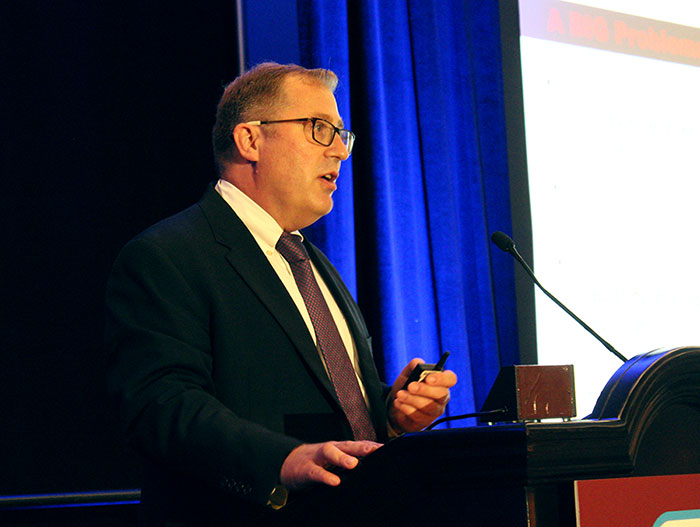At MHSRS 2022, USAMRDC Powers Army Modernization Efforts

Addressing a plenary session crowd on the topic of virtual health technologies at the 2022 Military Health System Research Symposium, Matthew Quinn, science director at the U.S. Army Medical Research and Development Command's Telemedicine and Advanced Technology Research Center, couldn't help but peek into the future. While discussing TATRC's much-discussed National Emergency Tele-Critical Care Network, he began to veer into a how NETCCN will both support and intertwine with burgeoning Army modernization efforts.
"If you think about multi-domain operations, they're characterized by both massive casualties and the need for prolonged care – and we've got to provide solutions for both of those," said Quinn, who helped guide NETCCN to its launch nearly two years ago. "They're defined by their limited resources, so the question becomes how do we extend those scarce resources to when and where they're needed?"
Quinn envisions NETCCN as a key part of the Army's larger modernization push; the way he tells it, NETCCN was built with just that concept in mind. As a cloud-based, low-resource, stand-alone health information management system, NETCCN can be downloaded as a simple smartphone application. Its strength lies in its ability to be scaled up-or-down depending on patient need – a built-in capability rife with potential on the future battlefield. Designed to work from anywhere to anywhere (or, in technical terms, from "point-to-point"), NETCCN has been a near immediate success: on the second day after launch, a nurse in Guam used NETCCN to call clinicians in the U.S. to help stabilize a COVID-19 patient suffering from a collapsed lung.
"We did a video where we interviewed folks and they talked about their experience with NETCCN," said Quinn during his presentation, "and a doctor at a smaller hospital said, 'Who wouldn't want this type of technology in your pocket – if nothing more than to say 'this is the right thing to do, now try this next – now do that'?''"
That's where NETCCN really shines, according to Quinn. Already shaped by multiple mobilization efforts across the U.S., along with thousands of exchanges through the platform and hundreds of additional encounters with solely military personnel, Quinn and the TATRC team are consistently refining NETCCN to help save lives in MDO; it's sprawling reach and the fact that it is, by design, both light and compact (as a Warfighter would likely be carrying his-or-her smartphone already) solidifying its growing stature.
"It's about quickly learning how to use the technology and to loop-in support when you need it," said Laura Baker, a senior manager at Deloitte Consulting supporting NETCCN's extended development. "It's not just about pushing buttons anymore."
Baker, who spoke to the crowd following Quinn, led the study of a pair of separate military exercises in support of the technology over the past two years. She noted that Soldiers only truly excelled at using NETCCN'S full range of capabilities when granted access to a private, dedicated mobile network, which was set up expressly for each exercise. The installation of such networks will likely be key in MDO, specifically in situations where access to the current network might be compromised, or in austere situations where network infrastructure simply does not exist.
"We're working across partners, using common data standards and message formats to achieve these goals," noted Quinn, "and you only do that through sausage-making, through doing the hard work required – and then you finally bring it into the military context where we have heterogeneous tools to offer."
That effort comes with new -- and sometimes surprising – realizations about the way people use NETCCN technology. For instance, the TATRC team found that, on average, users like to interact with medical professionals via text messaging more often than via NETCCN's video capabilities; the immediacy of the former considered a potential reason.
As for the future, NETCCN wants to become the go-to system for national disaster response – the goal being to use the lessons learned in those situations to guide future refinements to the technology for military purposes. TATRC also plans to add capabilities – including cooperation with wearable technology and by extending its "virtual hospital" capabilities – to NETCCN in an effort to aid Army and joint medical concepts modernization work.
"We're on our way," said Quinn of NETCCN's journey. "We want to give our Warfighters and our medics and our caregivers every advantage that we possibly can – and this is it."














